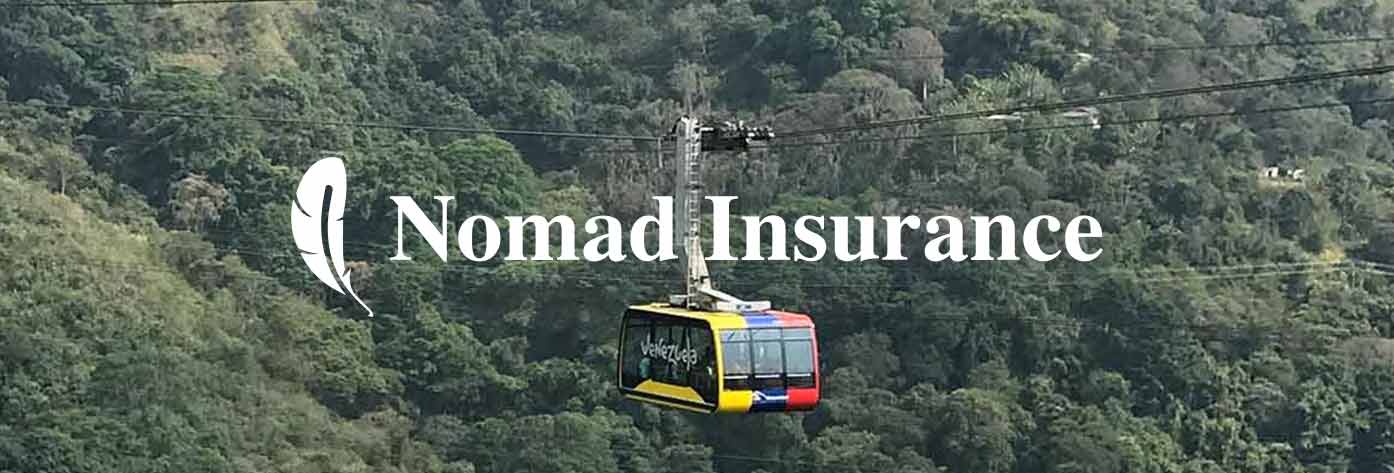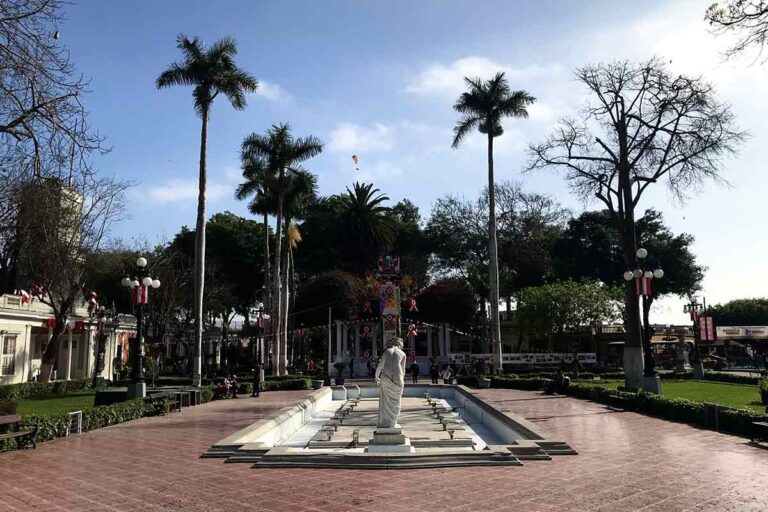Is Venezuela Safe 2024?
Welcome to our Venezuela safety guide.
Despite the mass reports of this nation being a war-torn hell zone, I (George – as well as many other travelers) have actually had a safe and memorable time here.
Home to the tallest waterfall in the world, mesmerizing Caribbean beaches as well as the snow-capped peaks of Mérida, Venezuela should be on all travel bucket lists.
Venezuela Quick Summary:
- 📍 Where is it: South America
- 🗺 Difficulty Getting There: Moderate
- ⏱ Time needed: 2 Weeks (Minimum)
- ☀️ Best Time to Visit: May/October
Is Venezuela Safe?
In this comprehensive guide, we’ll explore everything you’ll need to know about Safety in Venezuela as a backpacker or traveler.
We’ll look at all the different factors, our top safety tips, other useful information as well as an FAQ section where we answer your key questions.
If you’ve read our backpacking South America guide you will know that we have included Venezuela as a viable option to add to your travel itinerary, so buckle up and let’s go!
Is Venezuela Safe Right Now?
Quick Answer: Certain areas of the country are very safe for tourists to head to. These include Los Roques, Canaima National Park (with a tour of course), Mérida and the districts of Chacao and Altamira in Caracas.
You’ll still need a raised guard and take precautions where possible to minimize risks. Heading outside of these areas can be done, as long as you prepare the best you can (we’ll explore some of our best tips later in this guide).
Got travel insurance for Venezuela?
Are you planning to visit Venezuela soon? It can be difficult to find a reputable provider who will cover you in this country. SafetyWing is a solid choice who provide a monthly renewable plan, which includes medical cover and multiple home visits during your trip.
Venezuela Travel Warnings
As you can imagine, pretty much every country is issuing some kind of serious travel warning against visiting Venezuela.
However as we’ve mentioned, a lot of this is based on falsehoods and fearmongering (George has actually been here and can say otherwise).
With a good amount of planning and knowledge of where is safe, you can have a fun and memorable time in Venezuela.
We recommend heading to any of the below areas:
- Caracas (Chacao, Altamira)
- Margarita Island
- Los Roques
- Canaima National Park
- Mérida
- Choroni
There are more destinations worth visiting, however, you’ll need to put some extra effort into planning and staying safe.
These include:
- Caracas (El Silencio)
- Barquisimeto
- Valencia
- Maracay
- Lake Maracaibo (from the main city)
We recommend you have some basic Spanish knowledge or at least practice while on the road, carry this Latin American Spanish phrase book for the ultimate travel resource.
Where to Stay in Venezuela
Caracas – We highly recommend first getting an AirBnb for your first couple of days, as your host will be able to help you land on your feet before exploring Venezuela. Afterwards (once street smart and know how things work), you can stay at Hotel Arroyo which is just south of the Plaza Bolivar in El Silencio.
Mérida – Lots of cheap apartments and hotels here, however, our favorite has to be the Hotel Plaza CA. It’s in a really safe area, has breakfast included and is also close to many great restaurants and also important landmarks. You’ll only be a 10-minute walk from the infamous Teleférico too (which is among the longest on earth).
For any other cities – you’ll need to check thoroughly on AirBnb given many hotels are still not listed on sites like Booking.com (Hostelworld is almost useless here).
Is Caracas Safe to visit?
Below we’ll take a look at the current safety situation in Caracas.
Crime in Caracas
There’s no beating around the bush – this Latin American capital definitely felt less safe than others (less safe than San José or Mexico City, however safer than Quito or Tegucigalpa).
Crime is usually robbery or theft (on passing motorbikes or by an individual in the street), however, assault can also take place if you head out at night alone or take a wrong turn when in the city.
It also highly depends on the time of day too, which we’ll now look at below.
Caracas Safety during the Day
The areas of Chacao and Altamira are not only safe to walk around during the day, but they’re also (dare I say) pleasant too.
Other touristy areas of Caracas (such as El Silencio, Sabana Grande and the area around. the Teleférico of Cerro Avila) are fine for those who already have some Latin American travel experience under their belt. However, it’s best to leave these areas before evening as they get less safe at night.
It’s best to stick to areas that have lots of people, given it’s extremely unlikely for assault to occur in such a context. Just be sure to keep your safe wallet and phone in your front pockets to avoid getting robbed.
Lastly we have the Metro. Aside from broken elevators and big crowds, I thought the Metro was pretty efficient, and the best way of getting around Caracas. Again leave all valuables at home and dress down when heading underground.
Caracas Safety at Night
I’ll be the first to say it – in some areas of Caracas at night I actually felt safer than other Latin American capitals (Quito being a strong example).
If you are in Chacao or Altamira it’s fine to walk around at night. Just be sure to leave valuables at home and also take heed of any local advice on where to go and where not to go.
For other areas (such as El Silencio) I highly recommend not heading out at night (or only with a contact or group you already know well). Crime is still a big problem here, and at night it’s more of a risk compared with the day.
As with any other place in the world – just remember that being a victim of crime is a probability at the end of the day, and certain factors (going out at night, dressing affluent, looking lost etc) will only increase your risk.
Things to do in Caracas
The strong majority of foreign travelers (I’d estimate 80%+) don’t even leave the Caracas airport, and head straight to either Los Roques or Canaima. However, they’re missing out since there are some really cool things to see and do in the Venezuelan capital.
Cerro Ávila is by far the biggest, which is the imposing mountain that rests above Caracas to the north. You can take the cable car up (or also hike if you’re fit) where you’ll have some truly stunning city views. There’s also the infamous Humboldt Hotel up here, as well as numerous food stands selling local delicacies and classics.
Caracas is also a fantastic place to learn about the history of Venezuela. History buffs will want to head to The Birthplace of Simon Bolivar, who freed Venezuela and other Latin American countries from Spanish Rule.
The Panteón Nacional is not too far from here as well. You can also enjoy several parks too, such as the Plaza de Francia in Altamira which has several monuments and a beautiful setting that is perfect for a photo.
See our dedicated guide to travel safety in Caracas to get more insight on what to expect.
7 Safety Tips for Venezuela
Below we will list 7 of our top safety tips for when traveling to Venezuela.
1. Stash Money in Different Compartments
Given the current economic climate, you’ll need to bring enough US Dollars in cash to last your whole trip. Of course, it’s not the most comfortable thing to do, so what we recommend doing is splitting this into 3/4 piles to add extra safety (for example one in your safe wallet on you at all times, another in your toiletries etc).
2. Have a Local Contact
This is most important when first arriving in the country, which will help you get adjusted during your first couple of days. If you don’t know anyone, then book an apartment on AirBnb (as they’re used to welcoming tourists and will know where to get a SIM card, local food etc).
3. Keep Spontaneous Conversations Brief
Of course, by this, we mean when out on the street. Venezuelans are very open and clever people, however unfortunately this means that scammers and thieves also have their ways too. When you do get into a random conversation and feel alarmed, be polite and then excuse yourself (and keep walking).
4. Leave all Valuables Locked Up in your Accommodation
There’s simply no need to carry heavy amounts of cash or your passport with you, and doing so will only increase your risk of getting robbed. Keep them in the accommodation, and use a padlock for an extra layer of security.
5. Dress Down when out in Public
It’s important to remember that poverty is a big issue in many parts of Venezuela, and flashing your wealth is a big no-no here. Dress down, stay safer and you’ll also feel more comfortable too. The only exception is when taking pre-arranged taxis directly to and from a venue.
6. Use a Money Belt when traveling between Regions
When traveling between different regions, you’ll need to use your passport to prove your identity (George tried other documents but only a passport was accepted). It’s wise to keep this in a safe Money Belt to reduce your chances of losing or having important things stolen.
7. Keep Screen-Time Brief when Out and About
This applies to any new place you’re in, let alone Venezuela. If you need to use your phone (you need directions), then walk into any nearby shop or only do so where there’s nobody around.
Venezuela Safety FAQ Guide:
Here we’ll take a look at the most frequent questions we get asked by our readers about travel safety in Venezuela.
Is Venezuela Safe? Final Words
And that’s all for our guide on how to stay safe in Venezuela.
Venezuela by far has the worst reputation in Latin America for safety (and a good contender globally too), however, it’s also made to look a lot worse than the actual reality here.
Whilst some parts are a strict no-go for tourists, other areas are great where you can enjoy a warm culture, amazing people as well as some truly indescribable sceneries. As long as you do a bit of preparation before leaving, you may find you end up loving this country too!
In this guide, we’ve explored the safety situation in Venezuela, which includes the areas to avoid, as well as any current travel advisories. As well as looking at the best things to do in Venezuela, we’ve also included our FAQ which answers your most burning questions.
While you’re still here, read our Venezuela Itinerary for more tips and travel inspiration.
👉🏽 P.S. If you’ve found this guide helpful, buy us a coffee here to say thanks! Or, support us by downloading our South America Travel Bible to get our best content.
“Dear traveler! Some links in this post contain affiliate links. Meaning, if you click through and make a purchase, book a hostel or sign up for a tour, we may earn a small commission at no additional cost to you. Your support means a lot and helps us to carry on traveling and maintaining the quality of this site for you.”














